
I hope you enjoy reading this blog post.
James Breese, Cricket Matters FounderIf you need my help with cricket coaching, strength and conditioning, injury rehab, or nutrition, click here.
Strength and conditioning in cricket (or S&C for short) refers to a systematic approach to training that enhances athletic performance through a blend of resistance training, cardiovascular exercises, mobility work, and recovery techniques.
It’s a comprehensive training framework that helps cricketers develop the physical attributes required to perform at their best when integrated with regular cricket practice.
Table of Contents
Introduction
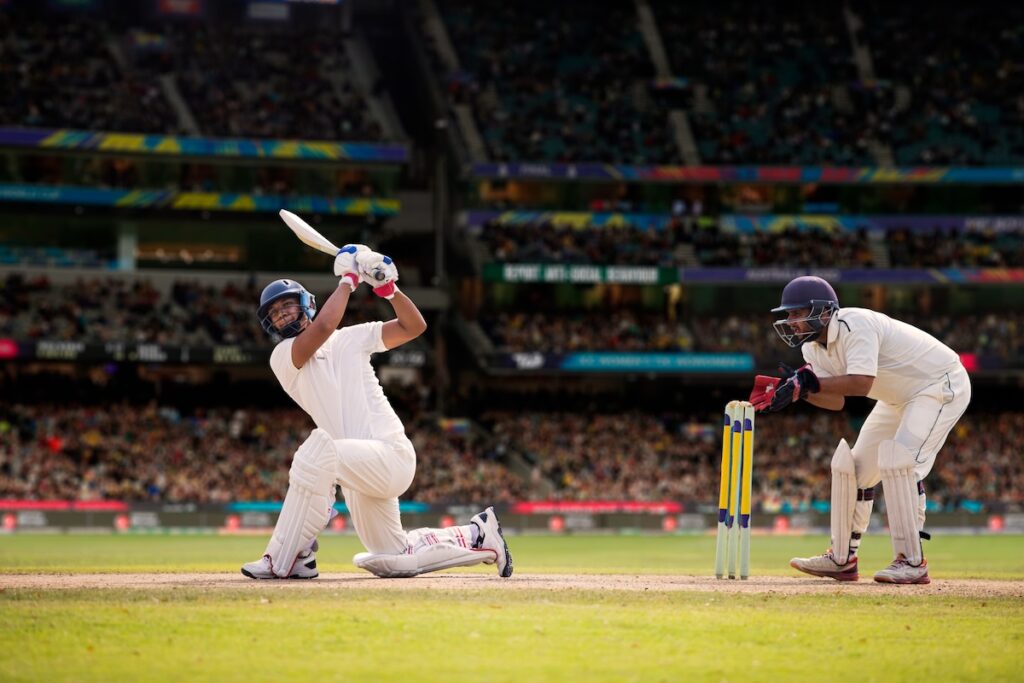
Cricket is renowned for its strategic complexity, varying formats, and physical and mental demands on athletes.
Since turning professional, the game has moved forward at a frightening pace.
And now, like other high-level sports, in today’s game, S&C is essential for playing performance and keeping players injury-free wherever possible.
Whether it’s a T20 match that demands more explosive power, speed and agility or a five-day Test match that requires sustained endurance and mental concentration, a proper training plan can provide the competitive edge needed to outlast and outperform the opposition.
Cricket is unique because it involves extended play periods and diverse, awkward, explosive movement patterns.
These factors require cricketers to possess a rare combination of speed, power, agility, endurance, and resilience—an unusual combination for most sports.
The purpose of strength and conditioning in cricket is to address these needs, helping cricketers develop the explosive power to smash the ball over the boundary for six, the flexibility, control and resilience to bowl fast repeatedly, and the stamina and endurance to keep going and going for hours at a time.
The following article will explore cricket’s specific strength and conditioning demands, the components of a cricket-specific S&C program, the benefits such training brings both amateur and professional players and how we approach it.

Have You Downloaded Our FREE 7-Day Gym Workout Plan?
Grab your complete step-by-step 7-day gym workout plan for cricketers today. There will be no more Guesswork. Just follow the plan and get results.
Understanding the Demands of Cricket
The physical demands of cricket vary greatly depending on the role and the format of the game.
The distinct requirements for each role create specific training needs that should be addressed through strength and conditioning programs.
However, here’s a brief overview of the primary demands of batting and fast bowling, the two most researched elements in athletic development and one that covers the broadest initial spectrum. (Christie, 2012)
Batting
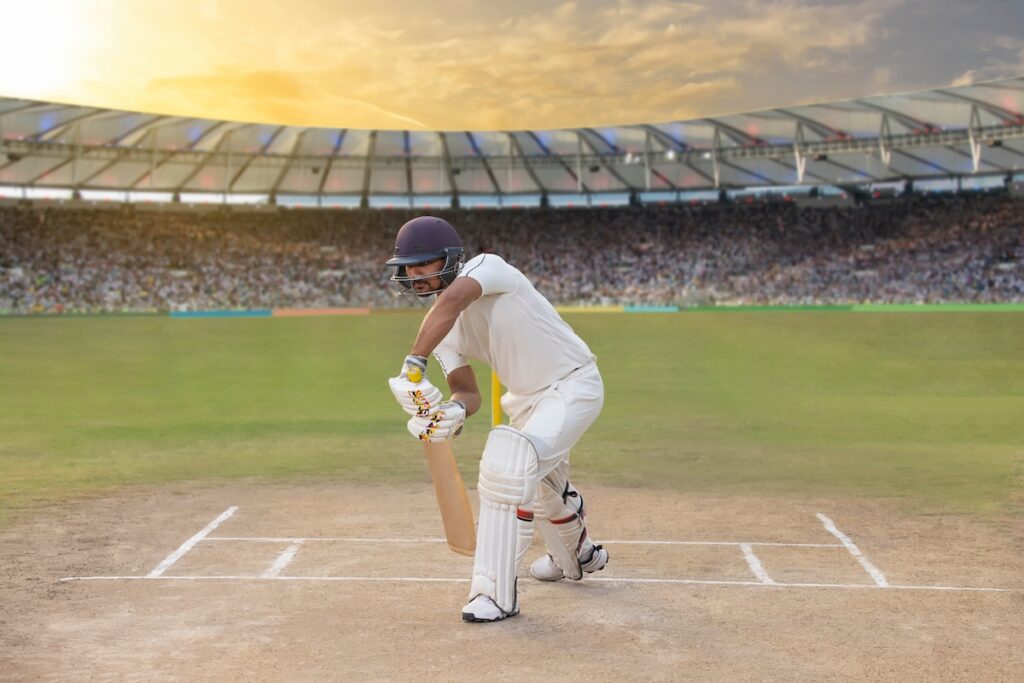
Physical Demands
Batting involves intermittent, high-intensity sprints between the wickets and the technical precision required to strike the ball effectively.
The movement pattern includes rapid acceleration after a shot and controlled deceleration when reaching the crease.
On average, batsmen cover between 2 and 5 kilometres during a One-Day International or Test match.
Intermittent Effort
Batting involves a stop-start play pattern due to the need to run between the wickets after striking the ball. This results in repeated, high-intensity sprints requiring a balance of speed and endurance.
During innings in One-Day or Test matches, a batsman may average 2 to 5 kilometres through walking, jogging, and high-intensity sprints.
Mental Focus and Skill:
Due to prolonged periods at the crease, batters need solid mental concentration and technical skill. This is particularly important in Test cricket, where players may bat for several hours. Strategic sprinting helps them safely execute quick singles and maximise their scoring opportunities.
Sprint Training
Sprinting endurance and acceleration training are crucial for maximising performance between the wickets, particularly when taking quick singles and doubles or running extra due to fielding errors. This requires training that focuses on high-intensity bursts.
Upper Body Strength and Flexibility
Powerful shot-making requires upper body strength, particularly in the shoulders, arms, and core, to execute different shots effectively. Flexibility is essential to prevent injuries from repetitive swinging motions (Christie, 2012).
The combined information highlights the need for batsmen to incorporate speed, strength, and skill-based training to effectively handle cricket’s physical and technical demands.
Fast Bowlers
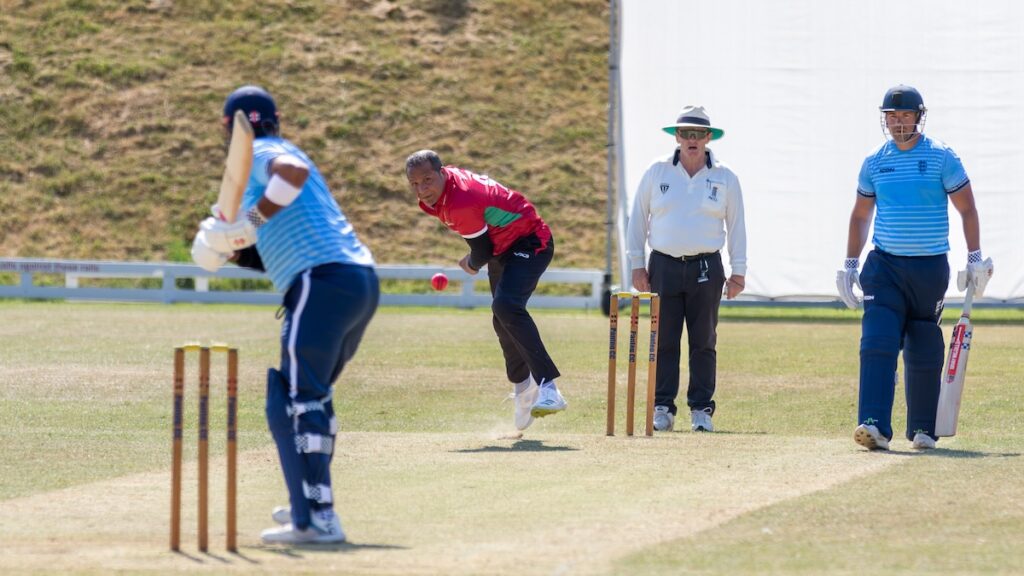
Physical Demands
Fast bowlers endure intense physical loads due to their repetitive, high-impact actions, particularly during the delivery stride.
This movement involves rapid acceleration, a forceful landing, and a powerful follow-through.
On average, fast bowlers cover between 6 and 8 kilometres during a One-Day International or Test match.
The total distance includes various types of movement:
- Running: They repeatedly run to deliver the ball during their spells.
- Fielding: Depending on the fielding position, they may need to move across the field to retrieve balls.
- Sprints and Strides: Deliveries require high-intensity sprints during the run-up, contributing significantly to the total distance covered (Webster et al., 2020).
Positioning Impact
Fast bowlers typically cover more ground when fielding in the outfield than when positioned in the slips or closer to the wicket.
Injury Prevention
Fast bowlers are prone to injuries such as lumbar stress fractures, so a conditioning program focused on core stability, eccentric training, and strength is essential for handling repetitive impacts.
Aerobic Endurance and Sprinting:
Bowlers require aerobic endurance to sustain longer spells, and sprint training improves their speed and consistency across deliveries.
Recovery Period:
Fast bowlers often require strategic recovery periods between games and must carefully monitor their workload (Christie, 2012).
Incorporating this information emphasises the high physical demands on fast bowlers and underlines the importance of strength and conditioning programs tailored to their unique requirements.
Summary: In cricket, each role requires specific physical attributes and training programs:
- Batsmen need agility, acceleration, endurance, and explosive upper-body strength to execute quick sprints between wickets and powerful shots while remaining injury-free.
- Fast bowlers must focus on all these attributes, such as injury prevention and endurance, for prolonged efforts.
Well-designed strength and conditioning programs cater to these requirements by developing specialised skills and improving overall fitness.
Such programs ensure that players can meet the demands of their respective roles, enhancing performance and reducing injury risks.
Now, spin bowlers are similar to fast bowlers. You may not think it, but they, too, must be explosive at the crease and bowl for prolonged periods, so I include them loosely under the term fast bowler for this article.
However, this leaves one specialist position to discuss: the wicketkeeper.
Wicketkeepers

Wicketkeepers have a specialised role in cricket that requires agility, endurance, skill, and mental resilience.
The repeated crouching, lateral movements, and catching actions demand strength and flexibility, highlighting the importance of a targeted strength and conditioning programme.
Here’s a closer look at the unique demands and training needs of wicketkeepers:
Movement and Skills:
- Repetitive Actions: Each delivery requires the wicketkeeper to crouch, shuffle laterally, or run to the stumps. On average, a wicketkeeper performs lateral steps around 78 times per innings, lateral shuffles 53 times, and runs to the stumps 27 times.
- Essential Skills: They receive the ball from fielders around 42 times per innings and make underarm throws 32 times. These movements necessitate quick reflexes and precise hand-eye coordination (MacDonald et al., 2018).
- Technical Requirements: Catching ability is crucial for wicketkeepers, whether standing close to the batsman or moving swiftly to catch or stop balls. Successful stumpings and catches require strength, agility, and sharp decision-making.
Training Implications:
- Multi-Directional Movement: The role involves significant lateral and explosive movements, requiring training programs emphasising drills to improve agility and flexibility.
- Fitness Profiling: Research indicates that wicketkeepers need significant flexibility due to their crouching position but exhibit similar levels of agility, speed, and balance as batsmen (Kumar & Gladykirubakar, 2015).
Injury Risks and Prevention
Wicketkeepers face unique injury risks due to their specialised role and repeated movements.
- Repetitive Strain: The repetitive crouching position often leads to knee injuries if the technique is not optimised. Strengthening the lower body and improving flexibility can help prevent repetitive strain injuries (MacDonald et al., 2013).
- Lateral Movements and Explosive Actions: The rapid lateral movements required for diving or sprinting often lead to muscle strains, particularly in the lower back, hamstrings, and groin. Flexibility training and proper recovery techniques are essential.
- Finger and Hand Injuries: Repeated catching and diving make finger and hand injuries common. Sprains and fractures may result from poor glove techniques, overuse, or by accident. Strengthening the hands and fingers and using protective equipment can minimise these injuries (Pardiwala et al., 2017).
- Throwing and Arm Injuries: Underarm throws or quick passes to the stumps often contribute to shoulder and elbow strains. Proper throwing mechanics and shoulder-strengthening exercises are crucial for reducing chronic injuries.
- Agility and Core Training: Core stability helps reduce lower back injuries due to the twisting and diving motions required in wicketkeeping.
In summary, wicketkeepers require a conditioning program that includes all that of batsmen and fast bowlers, more flexibility training, finger and hand strengthening and care, and specific lateral agility exercises to maintain optimal performance and reduce injury risks.
Now, what of the fielder? As everyone has to field.
Fielders
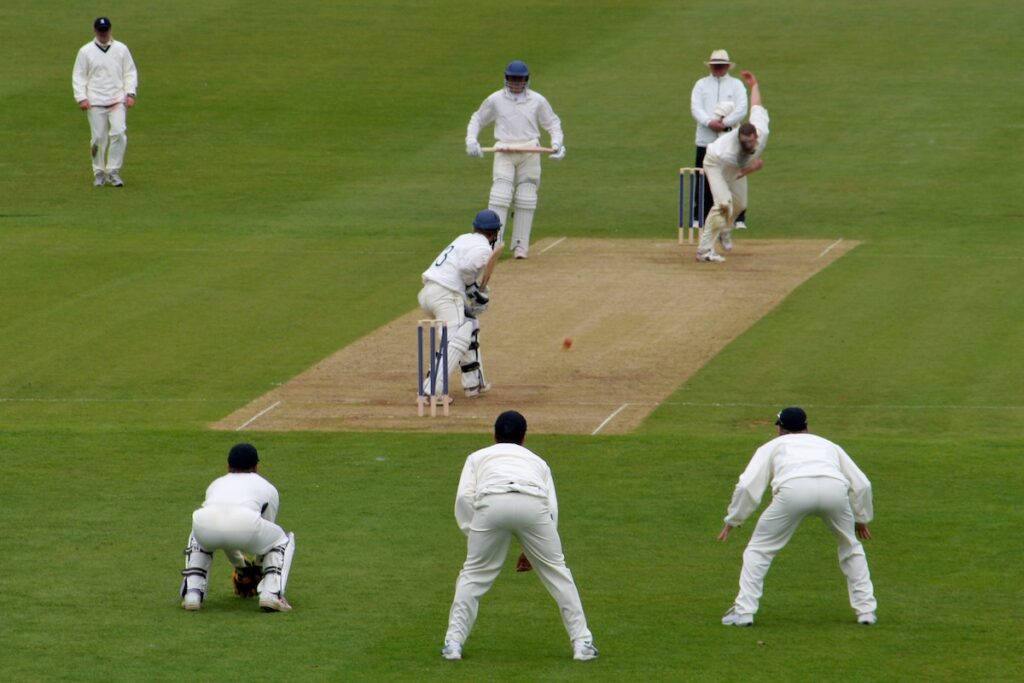
Fielding in cricket requires a versatile skill set emphasising agility, speed, and precision.
All cricketers must adhere to specialised training programs to meet these demands while reducing injury risks.
Physical Demands and Injury Implications:
Fielders often sprint short distances to intercept or catch the ball and sometimes need to dive, slide, or leap to make a crucial stop.
Like outfielders in baseball, fielders in the deep rely on strong shoulders, arms, and core muscles to make long-distance throws back to the wicketkeeper or bowler.
Close fielders need flexibility and quick reflexes to handle sharp catches and produce bullet-like throws that target the stumps.
However, due to overuse and improper mechanics, such repetitive movements can lead to shoulder injuries, particularly rotator cuff tendinitis.
Continuous bending and crouching to field the ball can also strain the lower back, while sudden sprints and dives may cause hamstring, calf and groin strains.
Key Findings from Baseball Research

Research from baseball, a sport with similar throwing mechanics to cricket, provides valuable insights into injury prevention and conditioning strategies:
- Overuse and Fatigue Injuries: Baseball pitchers frequently sustain shoulder and elbow injuries due to repetitive throwing. Fatigue, overuse, and improper rehabilitation contribute to these injuries (Saper et al., 2018).
- Range of Motion and Flexibility: Deficits in shoulder range of motion can increase injury risk. Regularly stretching the shoulder’s posterior muscles helps maintain flexibility and reduces shoulder and elbow injuries (Shitara et al., 2017).
- Strength Training and Conditioning: Comprehensive arm-care exercise programs that target shoulder strength and flexibility can reduce upper-extremity injuries significantly (Matsel et al., 2021).
- Proper Mechanics: Correct biomechanics and pitching techniques, like optimal shoulder kinematics, can minimize injury risks while improving performance (Fortenbaugh et al., 2009).
Implications for Cricket Fielders
- Shoulder and Elbow Care: Fast bowlers and wicketkeepers, like baseball pitchers, should follow comprehensive conditioning programs emphasising shoulder and elbow flexibility to maintain a full range of motion.
- Strength and Flexibility Training: Implementing group-based or individual arm-care programs focused on shoulder strength and flexibility can reduce the risk of injury in cricket fielders.
- Biomechanics and Form: Cricket coaches should emphasise proper bowling and throwing mechanics to reduce strain on shoulder and elbow joints.
- Preventing Overuse Injuries: Monitoring workload and allowing ample recovery time is crucial to avoid fatigue injuries. Workload management should be a priority to minimise the risk of shoulder and elbow injuries.
By incorporating these insights into training programs, cricket players can meet the physical demands of fielding while minimising injury risks, maintaining high performance, and ensuring a longer, more successful playing career.
As you might realise, strength and conditioning in cricket is not easy to perform at the highest levels and stay injury-free.
So, how do we approach strength and conditioning for cricket at Cricket Matters?
How Cricket Matters Approaches Strength and Conditioning in Cricket

If you haven’t read this, I highly recommend reading the 10 Components of Fitness for Cricket.
It gives a far more detailed overview of our approach to fitness in cricket. Still, for simplicity and ease, we look at strength and conditioning for cricket through the following ten components of athleticism:
- Strength – the ability to generate force.
- Speed – the ability to reduce the duration of a movement cycle.
- Power – the ability to generate maximum force in the shortest time.
- Mental Resilience – the capacity to challenge and expand your comfort zone.
- Aerobic Capacity – the maximum physical work an individual can perform, measured by oxygen consumption.
- Anaerobic Capacity – the maximum effort exerted in short, intense bursts of physical activity.
- Balance & Coordination – the ability to execute movements with precision and elegance.
- Agility – the capability to move swiftly and seamlessly between different movement patterns.
- Stability – the skill to maintain control of one part of the body while moving another, safeguarding vulnerable areas.
- Mobility – the ability to move joints and muscles through their full range of motion.
Each of these components of strength and conditioning for cricket are equally important.
However, rather than ranking them sequentially from one to ten—a method that proves unfeasible due to their equal importance—we opt for a more holistic approach.
We liken these components to building a house, which requires a solid foundation before the structure can be built and the final touches applied.
Consequently, we organise the components into three tiers of fitness: Layer 1, Layer 2, and Layer 3, grouping them based on the foundational skills needed before advancing to the next level.
This structure ensures balanced development in critical areas, recognising that competence in certain aspects is necessary before others.
This helps us deal with the complexity of creating training programmes for cricket players, which, as you now know, is not easy.
It also highlights the need for individual programme design instead of the standard template approach many coaches adopt.
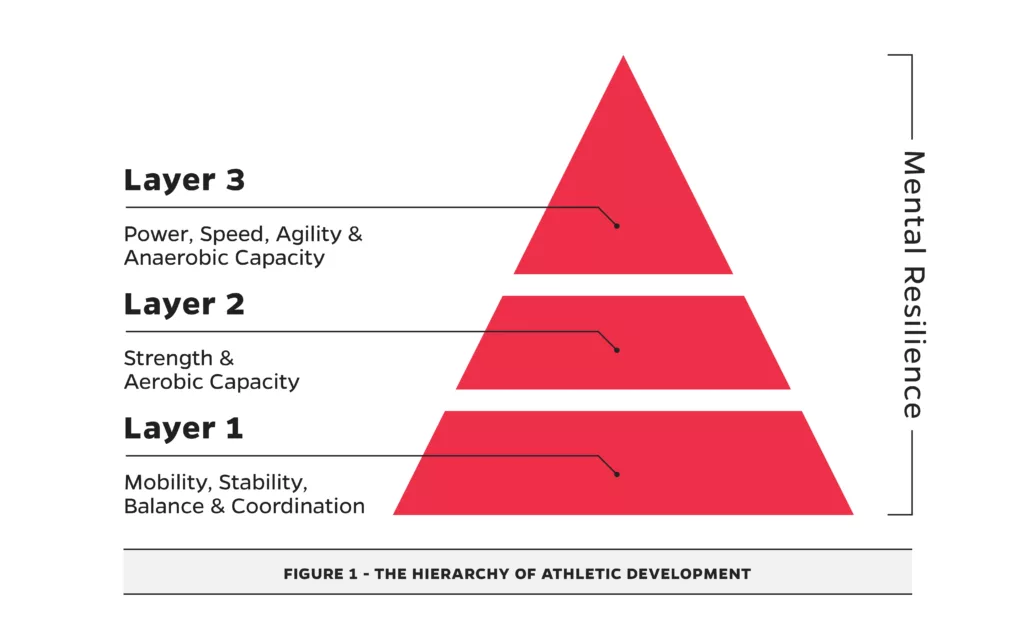
Further Reading
Final Thoughts: Strength and Conditioning in Cricket

Strength and conditioning in cricket is not only a comprehensive endeavour but also a critical one that requires a personalised and structured approach to ensure players can meet the demands of the game and minimise injury risks.
Every role on the cricket field, from batting to fast bowling, wicketkeeping to fielding, comes with unique challenges that necessitate tailored training.
Cricket Matters approaches this complexity through a structured framework that leverages the ten components of fitness and the performance pyramid.
By emphasising critical areas like strength, speed, power, mental resilience, and flexibility, the methodology ensures that cricketers can enhance their performance while reducing the risk of injuries.
This layered approach recognises that foundational skills must be developed before more advanced ones can be mastered.
Ultimately, Cricket Matters’ strength and conditioning programs deliver a well-rounded, practical solution that supports cricketers at all levels in achieving their fitness goals and excelling in their respective roles.
The programs provide the competitive edge needed to thrive in modern cricket, whether it’s a T20 match or a five-day Test.
Further Reading
FAQs
What Is Strength and Conditioning Training in Cricket?
Strength and conditioning training in cricket is a systematic approach to enhance the athletic performance of cricketers. It combines resistance training, cardiovascular exercises, agility drills, mobility work, and recovery techniques tailored to the sport’s specific demands. For batsmen, this training focuses on developing explosive power for quick sprints and powerful shot-making. For bowlers, conditioning emphasizes core stability, upper body strength, and injury prevention. Fielders and wicketkeepers benefit from agility, flexibility, and reaction time exercises. Players can develop the physical attributes required to excel in the sport by integrating cricket-specific conditioning with regular practice.
Is Strength and Conditioning Only for Professional Cricketers?
No, strength and conditioning benefits all cricket players, regardless of their level. While professional cricketers have access to specialized programs, amateur players can also improve their performance through structured conditioning. This training helps players build muscle tissue, increase joint stability, and enhance overall fitness. Even those new to the sport can gain from a properly designed regimen that reduces injury risks and optimizes physical health.
Can Pre-Existing Injuries Affect My Cricket Training?
Yes, pre-existing injuries can influence the exercises that should be performed or avoided in cricket training. It’s important to consult a qualified coach or physiotherapist who can modify your workout to accommodate any existing injuries safely. This may involve adjusting weights, changing exercises, or using rehabilitation techniques like eccentric training to prevent exacerbating the injury while still improving overall performance.
How Do I Balance Cricket Practices and Games with Conditioning Workouts?
Balancing cricket practices and games with conditioning workouts requires strategic planning to minimize fatigue and injury risk—schedule conditioning sessions on non-practice days for optimal recovery and avoid heavy lifting right after matches. Focus on lighter conditioning or mobility work during the season to maintain fitness levels without risking overtraining. Periodize your training program, so intense conditioning phases align with off-season periods, ensuring you peak at key points in the cricket calendar.
Is Group Training or Personal Coaching Better for Cricket Fitness?
Both group training and personal coaching have their advantages. Group training offers camaraderie and motivation, allowing players to push each other and learn together. It’s beneficial for general fitness development. Personal coaching provides tailored advice and a customized program based on individual goals, injuries, and playing roles. Group training and personal coaching often offer the best results for cricket-specific fitness.
Is Squatting and Deadlifting Safe for Cricketers?
Yes, squatting and deadlifting are safe exercises for cricketers when performed correctly. These compound movements strengthen the core, hips, and legs, which are crucial for explosive sprinting, powerful batting, and bowling. Proper form, appropriate weight selection, and progressive loading are essential to prevent injury. If pre-existing conditions affect mobility or stability, consider alternative variations like trap bar deadlifts or Bulgarian split squats.
Do I Need Specific Equipment for Cricket Strength and Conditioning?
While access to equipment like barbells, dumbbells, kettlebells, and open space can enhance cricket conditioning, substitutions and modifications are possible. Resistance bands, bodyweight exercises, and simple agility drills can be effective alternatives for building strength, power, and speed. A well-planned program can adapt exercises to the available resources, ensuring you can maintain fitness levels and achieve conditioning goals even with limited equipment.


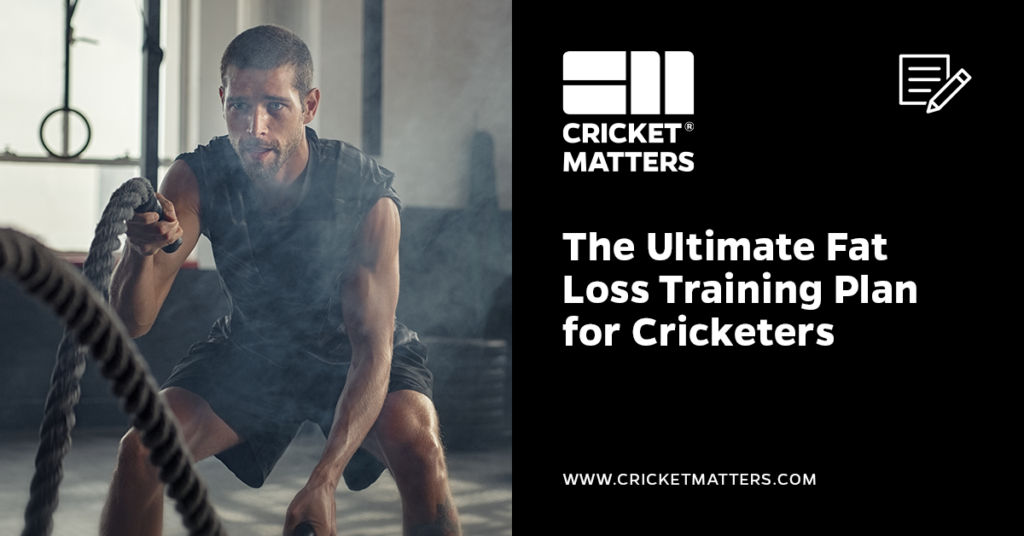
![[Case Study] Advanced Hiit Training Plan for Cricketers 5 Hiit Training for Cricketers](https://www.cricketmatters.com/wp-content/uploads/2024/04/HIIT_Training-1024x536.png)